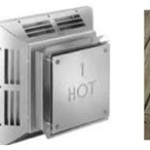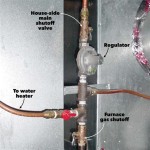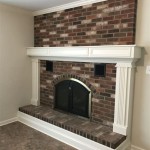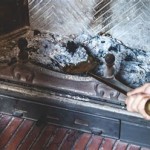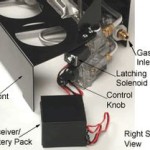Converting a Wood Fireplace to Gas: A Comprehensive Guide
While traditional wood-burning fireplaces offer a cozy ambiance, they can be messy, inefficient, and pose environmental concerns. Converting your fireplace to gas provides a convenient and cleaner alternative, enhancing your home's comfort and aesthetics. This guide explores the process of converting a wood fireplace to gas, outlining the steps involved, key considerations, and benefits of making the switch.
Evaluation and Preparation
Before diving into the conversion process, a thorough evaluation is essential. A qualified professional, such as a fireplace specialist or HVAC contractor, should assess the fireplace's current condition and determine its suitability for conversion. They will examine factors like the fireplace's structure, flue size, and existing components to ensure they meet the requirements for gas installation.
The professional will also assess the surrounding area and ensure adequate ventilation for a gas fireplace. They will ensure existing electrical connections are sufficient for operating the gas fireplace, taking into account factors like the type of gas system, burner size, and required safety features.
During this phase, discussions should include the desired gas type, whether natural gas or propane. Each has unique advantages and considerations relating to local availability, cost, and installation requirements. Depending on your location, one option may be more readily accessible and cost-effective.
The Conversion Process
Once the evaluation is complete and the conversion is deemed feasible, the installation process can begin. The steps typically involve:
1.
Dismantle the Existing Fireplace:
This involves removing the existing firebox, grate, and any decorative elements that won't be incorporated into the gas unit.2.
Install the Gas Fireplace Insert:
This is the centerpiece of the conversion, containing the burner, logs, and decorative elements. The insert is carefully positioned within the fireplace opening, ensuring a proper fit and sealing any gaps.3.
Vent Installation:
Depending on the type of gas fireplace insert chosen, a vent may need installation or modification. Venting is crucial for safe and proper operation, channeling exhaust gases away from the home. The professional will ensure compliance with local building codes and safety regulations.4.
Gas Line Connection:
A licensed plumber or gas technician will connect the gas line to the fireplace insert, ensuring it meets all safety and code requirements. They will install a shut-off valve for easy access and control.5.
Electrical Wiring:
The gas fireplace insert will require a power source for its electronic components, like the ignition system and remote control. The professional will install any necessary wiring and connect the unit to a dedicated outlet.6.
Finishing Touches:
The final step involves integrating the gas fireplace insert with the existing fireplace structure. This might involve adding decorative elements, a mantle, or other finishing touches to enhance the aesthetics.Gas Fireplace Advantages
Converting your wood fireplace to gas offers several advantages, making it an attractive option for homeowners seeking a modern and convenient solution. Here are some notable benefits:
Convenience and Efficiency
Gas fireplaces provide a significantly more convenient alternative to wood. They eliminate the need for hauling, storing, and stacking firewood, saving valuable time and effort. Gas fireplaces also offer improved efficiency, as they burn cleanly and produce more heat per unit of fuel compared to wood.
Safety and Reduced Maintenance
Gas fireplaces eliminate the risk of sparks and embers, minimizing the likelihood of fire hazards associated with wood-burning fireplaces. They also reduce the potential for smoke and soot, enhancing indoor air quality and reducing cleaning needs. The ongoing maintenance of a gas fireplace is less demanding, involving periodic inspections and cleaning of the burner and glass.
Control and Atmosphere
Gas fireplaces offer greater control over the heat output and flame intensity, allowing users to adjust the temperature to their preference. They generate a consistent and visually appealing flame pattern, creating a cozy atmosphere similar to a wood fire. Many gas fireplaces also come equipped with remote controls, providing more flexibility and ease of use.
Converting A Wood Burning Fireplace Into Gas Heat Glo
Can I Convert My Wood Burning Fireplace To Gas Woodlanddirect Com

Wood Fireplaces Gas Conversion That Counts

Convert From Wood To Gas With A Insert The Kernel Burner
Can I Convert My Wood Burning Fireplace To Gas Woodlanddirect Com

Wood To Gas Fireplace Conversion In Wisconsin Free Quote Badgerland Waesha

Wood Burner Conversion New Jersey Fireplaces Kjb

Want To Convert Gas Wood Fireplace Full Service Chimney

Convert To Gas Installing Fireplace Inserts Doctor Flue

Should You Convert Your Cabin Fireplace From Wood To Gas
Related Posts

